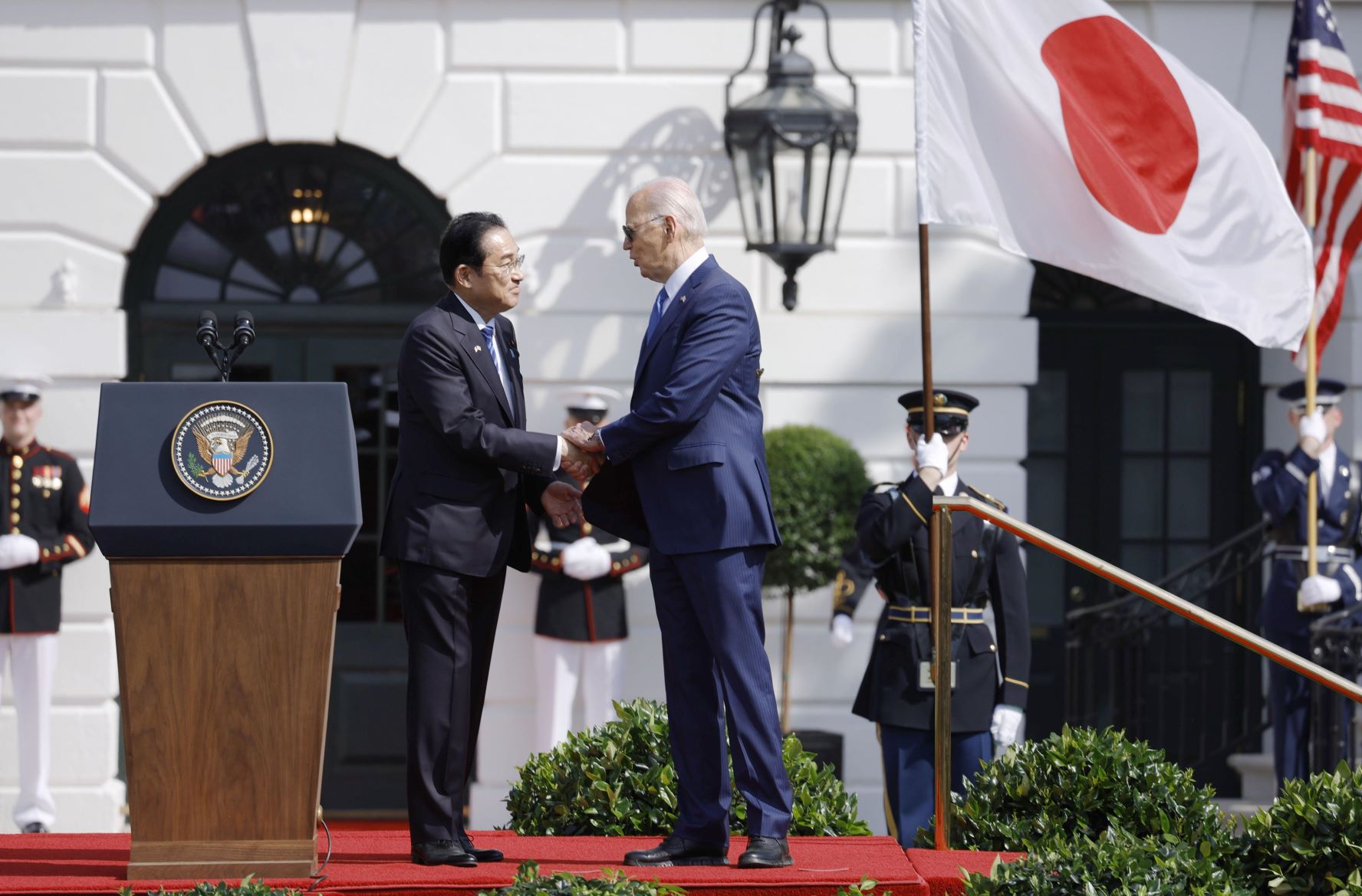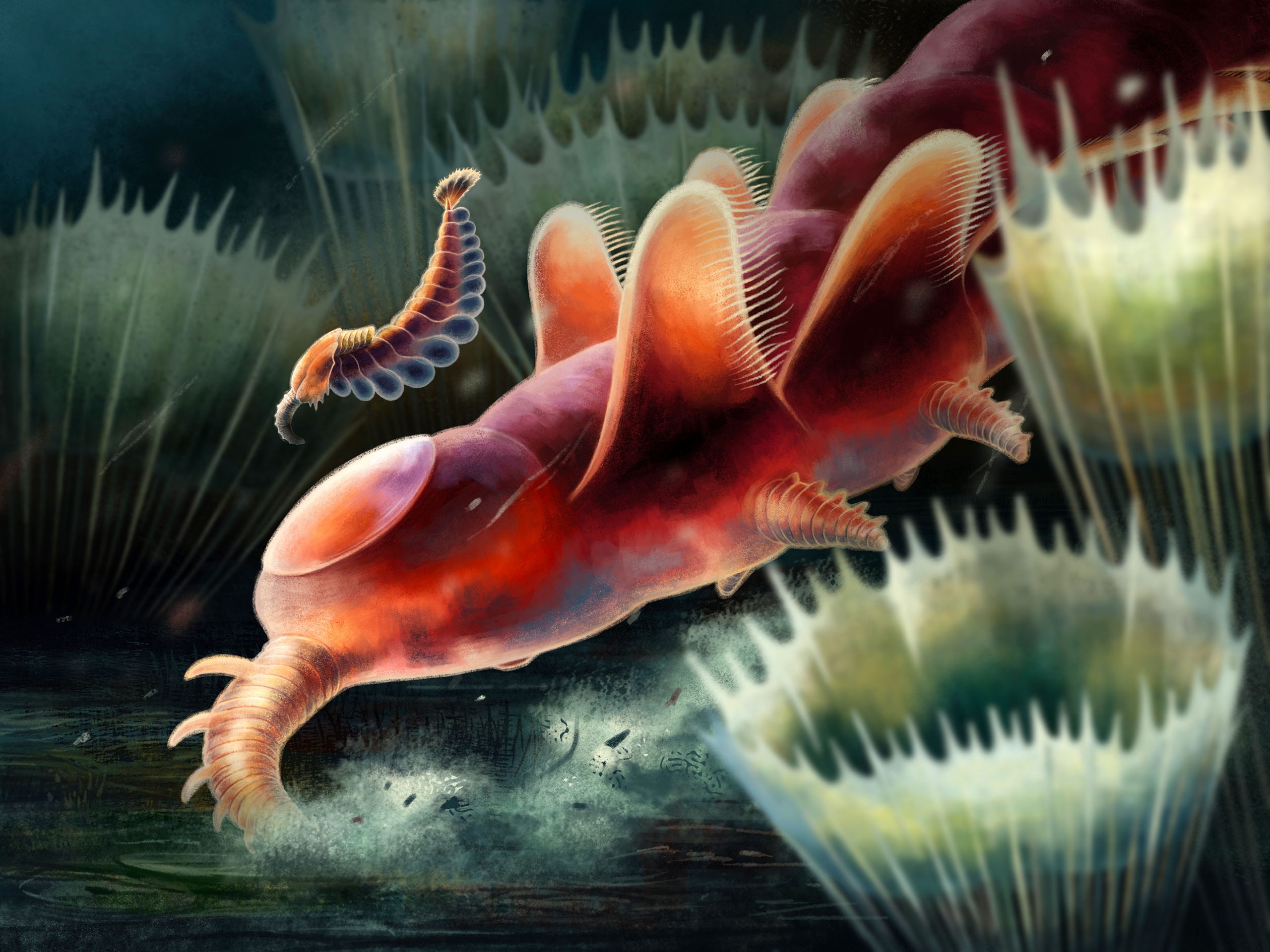に
オルドビス紀の Mieridduryn bonniae 化石の技術的再構成。 クレジット: Franz Anthony によるオリジナル アートワーク
ウェールズの「不思議な」化石は、節足動物の進化の歴史に新たな手がかりを提供します。
5 億年以上前に発生した動物のカンブリア爆発からの最も有名な化石は、現代の対応物とはまったく対照的です。 これらは、ファイブアイズのような「奇妙な不思議」です オパベニア 特徴的な前鼻と恐ろしい頂点捕食者 アノマロカリス 放射状の口器ととげのある摂食付属肢により、大衆文化の象徴となっています。 しかし、それらが進化の絶滅段階として認識されたのはごく最近のことであり、最大かつ最も重要な動物門の 1 つである節足動物 (カニ、クモ、および現代のヤスデを含むグループ) の起源を理解するために重要です。
に非常によく似た 2 つの新しいサンプル オパベニア ジャーナルの最近の記事で説明されています COVID-19 lockdowns by independent researchers and Llandrindod residents Dr. Joseph Botting and Dr. Lucy Muir, Honorary Research Fellows at Amgueddfa Cymru – National Museum Wales.
The Cambrian explosion, or the biological big bang, refers to an interval of time around 530 million years ago in the Cambrian Period when nearly all major animal phyla began to appear in the fossil record.
The quarry is well known as one of several local sites yielding new species of fossil sponges. “When the lockdown started, I thought I’d make one more trip to collect some last sponges before finally writing them up,” said Botting, “of course, that was the day that I found something sticking its tentacles out of a tube instead.”
“This is the sort of thing that paleontologists dream of, truly soft-body preservation,” said Muir, “we didn’t sleep well, that night.” That was the beginning of an extensive and ongoing investigation that grew into an international collaboration, with lead author Dr. Stephen Pates (University of Cambridge) and senior author Dr. Joanna Wolfe (The Department of Organismic and Evolutionary Biology at Harvard University).
Among the fossils unearthed so far are two very unexpected leftovers from the Cambrian “weird wonders.” Pates met with Botting and Muir to study the specimens using microscopes purchased through crowd-funding to examine the tiny specimens. The larger specimen measured 13 mm (0.5 inches), while the smaller measured a minuscule 3 mm (0.12 inches). For comparison, Opabinia specimens can be 20 times as long).
Exhaustive studies during this visit revealed additional details in the new specimens. Some of these features are also found in Opabinia, such as triangular, squishy lobopod ‘legs’ for interacting with the sediment, and—in the smaller specimen – a tail fan with blades similar in shape to Opabinia’s recently described sister, Utaurora. However other features recognized in the material, such as sclerites covering the head as well as the presence of spines on the proboscis, were not known from any opabiniid and instead hinted at possible radiodont (including Anomalocaris) affinities. The differences between the two specimens led the researchers to wonder were these due to changes during the growth of one species, or did they instead suggest that two distinct species were present in this new deposit?
The Ordovician periond spans 41.6 million years from the end of the Cambrian Period 485.4 million years ago (Mya) to the start of the Silurian Period 443.8 Mya.
The authors describe the new taxon, Mieridduryn bonniae, with the larger specimen designated the holotype. The status of the smaller specimen was left open, reflecting these different possibilities. “The size of the smaller specimen is comparable to some modern arthropod larvae – we had to take into account this possibility in our analyses,” said Wolfe.
The genus name Mieridduryn is derived from the Welsh language, and translates as “bramble-snout,” reflecting the spiny proboscis in the new material. It is pronounced like “me-airy-theerin.” “Many scientific names are made using Latin or Greek words,” Muir said, “but we really wanted to honor Wales, where the specimens were discovered, and so chose to use the Welsh language.” The species name bonniae pays tribute to the niece of the landowners, Bonnie. “The landowners have been very supportive of our research, and Bonnie has been avidly following our progress, even attending some of our Zoom updates,” said Botting.
The researchers used phylogenetic analyses, comparing the new fossils with 57 other living and fossil arthropods, radiodonts, and panarthropods, to determine their place in the history of arthropod evolution. “The best-supported position for our Welsh specimens, whether considered as one or two species, were more closely related to modern arthropods than to opabiniids. These analyses suggested that Mieridduryn and the smaller specimen were not “true” opabiniids,” said Pates.
Crucially, these results suggested that a proboscis—thought to represent a fused pair of head appendages—was not unique to opabiniids, but instead was present in the common ancestor of radiodonts and deuteropods (more derived, modern arthropods), and through evolutionary time may have reduced to become the labrum that covers the mouth in modern arthropods. However, the second-best-supported position for these specimens was as true opabiniids, so the authors enquired a bit further to test the robustness of this first result.
“These Welsh animals are 40 million years younger than Opabinia and Utaurora” said Wolfe, “so it was important to assess the implications of some features, such as spines on the appendages or a carapace, evolving convergently with radiodonts in our analyses.” If some, or all, the features shared between the Welsh animals and radiodonts were instead considered to have evolved convergently, the analyses strongly favored these specimens being considered true opabiniids, the first from outside North America and the youngest by 40 million years. Whatever the eventual conclusion, the fossils are an important new piece in the arthropod evolutionary jigsaw.
These small but scientifically mighty fossils are some of the first findings from this important new Ordovician fauna. Botting and Muir continue their work in the small quarry in the sheep field with more still to come. Muir added, “Even the sheep know we are on to something special here, they usually come to watch.”
Reference: “Ordovician opabiniid-like animals and the role of the proboscis in euarthropod head evolution” by Stephen Pates, Joseph P. Botting, Lucy A. Muir and Joanna M. Wolfe, 15 November 2022, Nature Communications.
DOI: 10.1038/s41467-022-34204-w
Contributors to the crowdfunding appeal to purchase the microscopes (including a Holloway Bursary from the Warwickshire Geological Conservation Society) are gratefully acknowledged. Additional funding was provided by a University of Cambridge Herchel Smith Postdoctoral Fellowship, Chinese Academy of Sciences PIFI fellowships (2020VCB0014 and 2018VCB0014). This work was also supported by the National Science Foundation DEB #1856679.
The specimen is accessioned at Amgueddfa Cymru—National Museum Wales.

「音楽マニア。プロの問題解決者。読者。受賞歴のあるテレビ忍者。」







More Stories
研究によると、伝統的な日本の食事は女性の脳の健康に有益である可能性があります
フロリダの家を引き裂いた金属片は、ほぼ間違いなく国際宇宙ステーションから来たものである
電車内のスネーク、日本の引率サービスに遅延 – The Standard Health